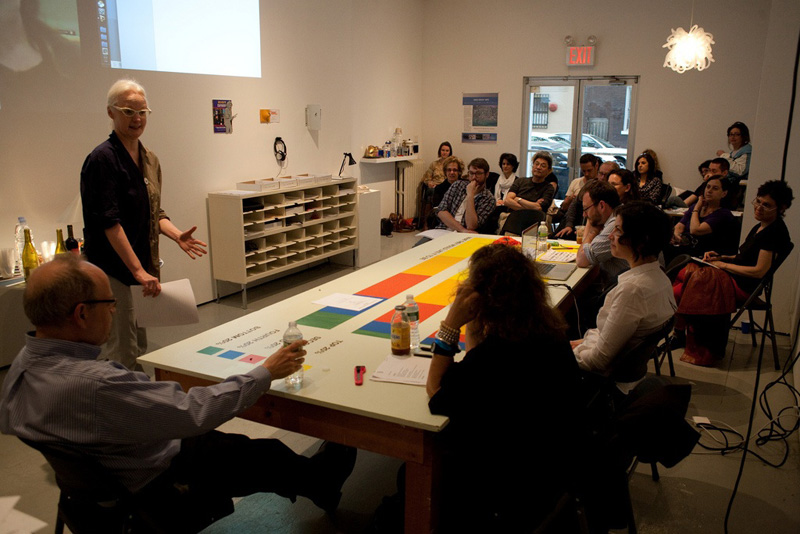
Modeling Alternatives: Art and Social Change
A Series of Discussions, Screenings and Presentations at Momenta Art
Schedule of Events
With this series we hope to further the possibilities for artists to participate in the development of social policy. Artists, art historians, museum professionals, academics, policy experts and government officials will consider how the art making process can contribute to social change as well as encourage elected officials, community leaders and the general public to think of artists as potential partners in a variety of circumstances.
Friday, April 22, 2011:
Modeling Alternatives: Discussion Part 1
In recent years many artists have begun to work in non-art contexts, pushing the limits of their creative practice to help solve social problems. Modeling Alternatives Part 1 brings together a group of artists and architects along with their individual collaborators including social workers, urban planners and diplomats to discuss how their groundbreaking teamwork produced uniquely successful outcomes.
Kadamabari Baxi
Kadambari Baxi will discuss Design for Diplomacy, a studio she taught for Barnard + Columbia Architecture students that explored design in relationship with national and cultural representation, transnational exchange and the engagement of public and political forms of diplomacy. The studio visited and interacted with the US Embassy in Amman, Jordan worked on three design projects at multiple scales: Redesigning Currency, Refilming Glimpses of the USA, and Engines of Diplomacy in Amman.
Kadambari Baxi is a New York-based architect engaged in a collaborative practice focused on architecture and media. She is Associate Professor of Professional Practice in Architecture at Barnard College and Columbia University, a partner in Martin/Baxi Architects, and a principal of imageMachine, a new media collaborative that incorporates expanded architecture and media concepts in multidisciplinary projects. More information at: www.imagemachine.com, http://www.martinbaxi.com
Molly Dilworth
Based on her collaboration with the Department of Transportation, Molly Dilworth will speak about the advantages and potential problems involved in collaborating with government agencies, and will make some practical recommendations about how to proceed including the need to communicate goals clearly and define the specific requirements of a project.
Molly Dilworth is a Brooklyn based artist who views creative practice as a form of research. Using data from a specific site as a structure, she gives form to things that invisibly motivate our actions. Her painting Cool Water, Hot Island was selected as the surface treatment for the 5 block 50,000 sq. ft. pedestrian plazas on Broadway in Times Square. Her 2010 rooftop painting, made in conjunction with the NYC CoolRoofs program was commissioned by 350.org as part of their international climate change art initiative. As a 2011 Art & Law Resident, Dilworth is researching the African American Burial sites in Lower Manhattan.
Artist Marisa Jahn
Marisa Jahn will be speaking about “Byproduct,” an anthology she edited that investigates the work of artists embedded in the government, industries, and electoral politics. Jahn will also speak about a few socially engaged projects including her work as an artist embedded in Street Vendor Project, an organization that advocates for the social and economic justice of street vendors in New York City.
Marisa Jahn is an artist, writer, and co-founder of REV-, an organization dedicated to socially-engaged art, design, and pedagogy (www.rev-it.org). A graduate of MIT, Jahn’s work has been presented in public spaces as well as the MIT Museum, The Power Plant, ICA Philadelphia, and SF Museum of Modern Art. Her work as an artist and organizer has been written about and featured in international media including The Wall Street Journal, Los Angeles Times, New York Times, Punk Planet, Art in America, and Discovery Channel. Jahn is currently the Deputy Director at People’s Production House, a journalism training and production institute that teaches working families, immigrants, and youth to produce ground-breaking news critical to a vibrant democracy. http://www.marisajahn.com
Mayumi Komura & Luna Malbroux
Fashion is both democratic and exclusive; entertainment and serious business. In Mayumi Komura’s fashion shows, in which political refugees model second hand clothes, she manages to transform democracy’s serious business into the most unexpectedly entertaining and moving performance you will have to privilege to witness.
Mayumi Komuro is an artist who grew up in Tokyo, lived in Aomori prefecture and Dusseldorf, and moved to NewYork in 2002. Working mostly video and installation, She has been showing her work in various galleries, Cue Art Center, Jamaica Performing Arts Center, as well as film festivals (Appalachian film festival, Migr@tion film festival, and Washougal International Film Festival) She received a Joan Mitchell Foundation Grant in 2007. Her last project, All Tomorrows Parties, was presented at International Center, NY in December, 2010. She received BFA from Pratt Institute and MFA from Queens College.
Luna Malbroux is the creator and editor of DoGoodFeelGreat.org, and website dedicated to highlighting individuals and organizations working towards social change while also providing insight on positive living. She is also finishing her master’s degree in Advanced Clinical Social Work with a focus in International Social Welfare from Columbia University.
Lynn Love & Ann Sappenfield
Considering their work on the New Emirati Encyclopaedia Britannica, Love and Sappenfield will discuss the responsibilities of artists and writers when they take on the task of representing what is considered ‘public information.’
The New Emirati Britannica is modeled on one of the most famous encyclopedias in modern history, Encyclopaedia Britannica, Eleventh Edition, published in 1911. An enduring work for its comprehensiveness and style, Encyclopaedia Britannica serves as a cultural artifact that continues to fascinate many scholars and public intellectuals. At the time of its publication, art historian Sir Kenneth Clark wrote of it: “One leaps from one subject to another, fascinated as much by the play of mind and the idiosyncrasies of their authors as by the facts and dates. It must be the last encyclopaedia in the tradition of Diderot which assumes that information can be made memorable only when it is slightly coloured by prejudice.” The Eleventh Edition was also known to be one of Jorge Luis Borges’ favorite works—his references to it as a source of information and enjoyment from his childhood through his working life demonstrate its allure not just as a repository for facts, but also as a spark for the imagination.
Like the Encylopaedia Britannica did in 1911with its United States market, The New Emirati Britannica serves to represent and inform a country balancing its long association with the UK alongside its rapid development of a distinct global identity—both economic and cultural. The 2010 Supplement focuses on science and natural history, and was commissioned by the Sharjah Art Foundation, UAE. It was created by Lynn Love and Ann Sappenfield.
Lynn Love is a writer whose work focuses mainly on science. She has written for various publications including The Brooklyn Rail, Audubon and The New York Times, and worked as a science writer and media strategist for The Breast Cancer Research Foundation, The New York Blood Center, NYU Medical Center, the Michael J. Fox Foundation for Parkinson’s Research, and The Rockefeller University, among others.
Ann Sappenfield is an information designer and illustrator based in New York City. Her recent work includes design for an exhibition of sacred books, Three Faiths: Judaism, Christianity and Islam, at The New York Public Library.
Mayumi Komura & Luna Malbroux
Fashion is both democratic and exclusive; entertainment and serious business. In Mayumi Komura’s fashion shows, in which political refugees model second hand clothes, she manages to transform democracy’s serious business into the most unexpectedly entertaining and moving performance you will have to privilege to witness.
Mayumi Komuro is an artist who grew up in Tokyo, lived in Aomori prefecture and Dusseldorf, and moved to NewYork in 2002. Working mostly video and installation, She has been showing her work in various galleries, Cue Art Center, Jamaica Performing Arts Center, as well as film festivals (Appalachian film festival, Migr@tion film festival, and Washougal International Film Festival) She received a Joan Mitchell Foundation Grant in 2007. Her last project, All Tomorrows Parties, was presented at International Center, NY in December, 2010. She received BFA from Pratt Institute and MFA from Queens College.
Luna Malbroux is the creator and editor of DoGoodFeelGreat.org, and website dedicated to highlighting individuals and organizations working towards social change while also providing insight on positive living. She is also finishing her master’s degree in Advanced Clinical Social Work with a focus in International Social Welfare from Columbia University.
Rachel Owens
The dialogical theater work and her sculptural practice both manifest a longtime interest in issues of social and political subjugation. The workshops and resulting performances allow the function of the sculptures and gallery to become malleable, sculptures become stage and seating and gallery becomes community center, moving meaning away from just the metaphorical and into peoples real lives.
Rachel Owens lives and works in Brooklyn. She has been included in exhibitions at the Austrian Cultural Forum, Lehman Maupin, Socrates Sculpture Park, Apex Art and others both nationally and internationally. She recently had her 4th solo show at Ziehersmith Gallery in Chelsea. Her work has been reviewed widely including The New York Times, The New Yorker, and Art in America. She began working with Theater of the Oppressed in her own neighborhood of Redhook with Falconworks community theater group.
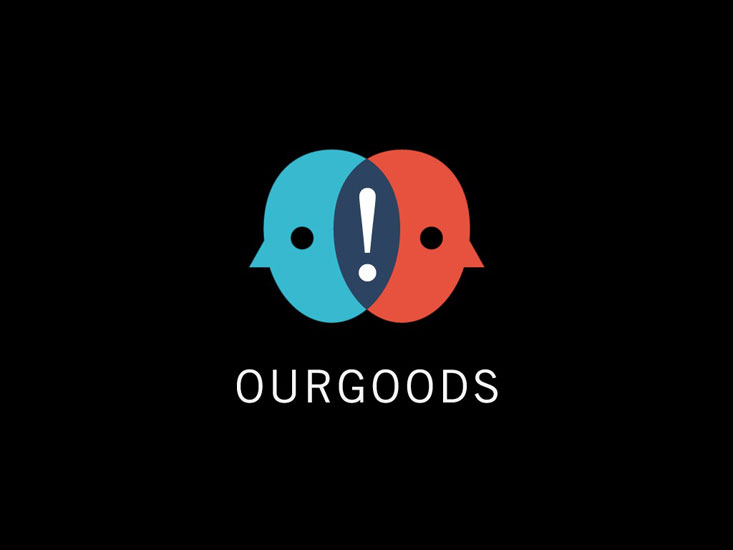
Sunday, April 24, 2011:
What is our work worth to each other?
OurGoods.org is a barter network for creative people. From 1 – 3pm on Sunday, April 24th, co-founders of OurGoods.org will be at Momenta to talk through the possibilities of barter, as well as the value systems that are produced, exchanged, and distributed outside of the cash economy.
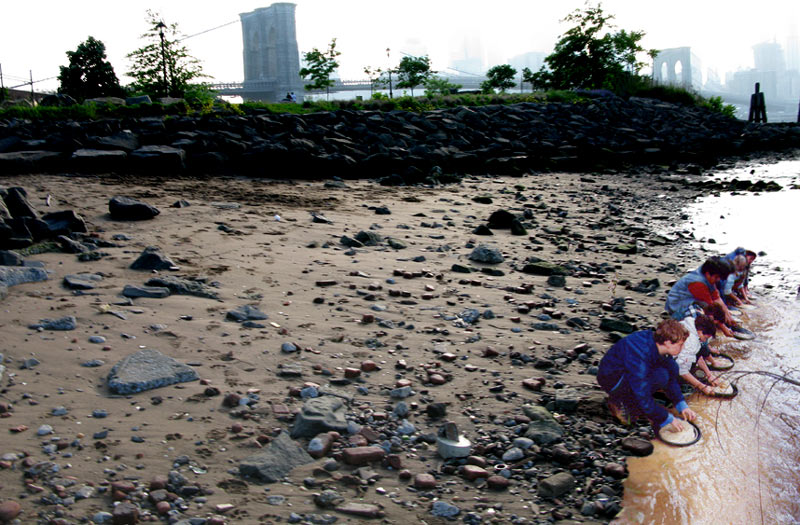
Practice
Performed by Art Codex: Vandana Jain, Mike Estabrook and others
Practice is an exercise with which people will be making their thought processes transparent to elaborate on how to make things better. Several people go online to research a specific social problem. Their procedures are made public via a projector with speakers and participants are invited to this explain what their starting points are and how they develop and become more complex.
About Codex: At the core of our collective practice is an investigation of contemporary social, political and economic issues. The War Show, a series of exhibitions exploring the idea of antagonistic collaboration, invited artists to duel through their artwork, and was staged in several forms: as duels between pairs of artists in Tactics at Future Prospects in Manila, Philippines; and as a war of history in Archive at ABC No Rio in New York City. Themes we have addressed in our projects include Native vs. Non-Native, Gentrification, Homeland Security, and Boom Town Economics.
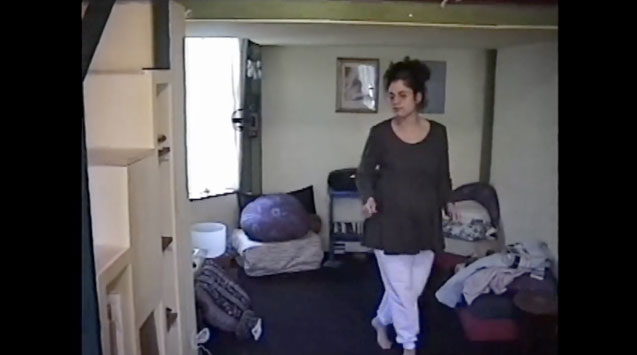
Thursday, April 28, 2011:
Sebastian Gutierez: Films about Squatters and the Squatter Movement followed by a discussion
Sebastian Gutierrez’s project consists of a series of three short video portraits that reveal various faces of an underground community in New York City’s Lower East Side neighborhood. It is composed through the narrative of four Colombian who live as squatters: a poet driven by his housing necessities, a part-time artist searching for adventure, a woman attracted by a melancholic sense of community and her child –who was delivered and raised in a squatter building.
Each motion portraits focuses on yet another layer of the immigrant experience in New York: The squatter. These rebels help blow life back into abandoned buildings and neglected neighborhoods, while at the same time they unveil an alternative for housing in this over gentrified city.
In addition to the videos, Geanme Marin, Abril, and Marta Rosario, all squatter moms, will engage the public in discussion about human rights, housing alternatives, displacement, and eviction.
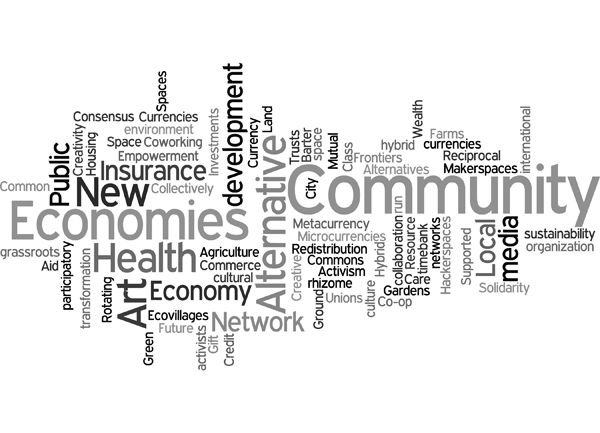
Sat. April 30, 2011:
Alternative Art Economies: A Primer
A workshop and discussion led by Erin Marie Sickler
In the last decade, the art market has grown from a relatively narrow and restricted market to a recognized site of asset development. According to some figures, today’s art market is 20 times larger than it was in 1990. Instead of a pocket industry with a small number of consumers and producers, art has become not only a global industry, but a major financial tool for diversifying risk that performs unlike traditional asset classes. Simultaneously, the idea of art has also undergone a substantial expansion. Following Marcel Duchamp’s maxim that anything can be a work of art, artists have increasingly pushed the limits of art’s definition. Beginning in the 1960’s, and especially today, many artists have sought hybrid practices that rely primarily on structures outside the art market for supporting and situating their work.
The two-part workshop Alternative Alternatives: Art and the Economy held at Trade School* on 3/12 and 4/3 examined the connection between these developments and also whether the growing demand for more sustainable models of resource management–from money, to energy, to food—has any role to play in the world of art. Imagining the possibility of an art economy based on mutual aid—the principle that an enterprise or association should be owned and controlled by the people it serves—versus one based on financial speculation, some of the questions that emerged included: How do economic policies and structures affect artistic production? What is the relationship between artists and non-art communities? Between artists and city policy? Between artists and global trade? Can artists use their class position to re-allocate resources from inside the art market to those outside of it? How do specific forms of behavior among cultural producers—hyper-visibility, egoism, and competitiveness—exacerbate the speculative nature of art? What kind of economic structures could transform this behavior? Can different forms of behavior yield different economic possibilities?
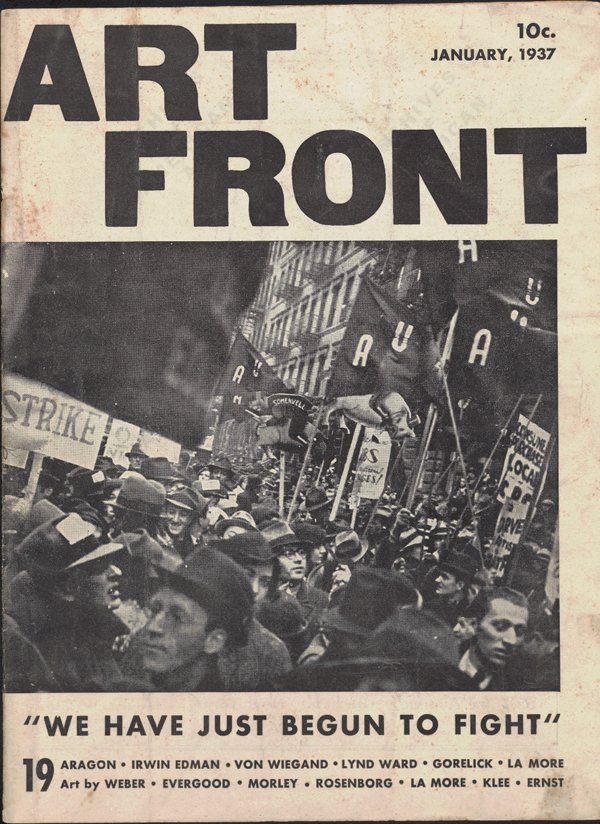
Sunday, May 1, 2011:
Artist-Workers under the New Deal: The Federal Art Programs, 1933-43
A talk by Andrew Hemingway
At a time when many liberal commentators felt that gross economic inequalities and the manipulation of political power by corporate interests was undermining American democracy, the federal government, under the presidency of Franklin D. Roosevelt, conceived a series of projects to rectify cultural inequities and take control of the arts out of the hands of the patron class. These projects were the largest instance of direct federal patronage of the arts in the history of the United States. This talk will look at some of their achievements and problems.
Andrew Hemingway taught Art History at University College London from 1987 to 2010. Since 1990 his research has focused primarily on U.S. art and culture, with particular reference to the period c. 1900-1955. A concern with the history of the left and of workers’ movements in the twentieth century resulted in his 2002 book Artists on the Left: American Artists and the Communist Movement, 1926-1956 (Yale University Press, and in the edited volume Marxism and the History of Art: From William Morris to the New Left (Pluto Press 2006). In 2002, he initiated the seminar ‘Marxism and the Interpretation of Culture’ at the Institute of Historical Research (University of London, School of Advanced Study), and was active in the organizing group until 2010. He has also co-organized two major international conferences held at UCL: ‘Cold War Culture’ (with Adrian Forty, 1994) and ‘Marxism and the Visual Arts Now’ (with Matthew Beaumont, Esther Leslie and John Roberts, 2002). His latest book, The Mysticism of Money: Precisionist Painting and Machine Age America, will appear with Periscope Press later this year.
The talk will be followed by a discussion moderated by IWT Agent Greg Sholette.
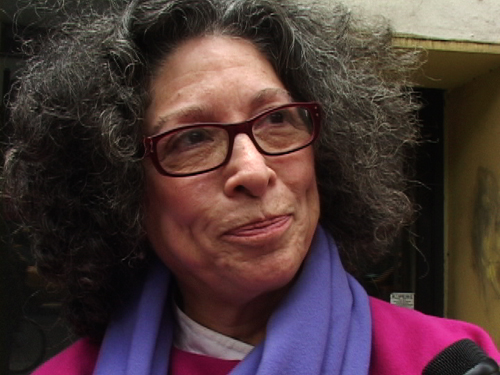
Thursday, May 5, 2011:
in complete world
a film by Shelly Silver
53 minutes, 2008
in complete world is a feature-length documentary made up of street interviews done throughout NYC. Mixing political questions (Are we responsible for the government we get?) with more broadly existential ones (Do you feel you have control over your life?), the film centers on the tension between individual and collective responsibility.
The film can be seen as a user’s manual for citizenship in the 21st century, as well as a glimpse into the opinions and self-perceptions of a diverse group of Americans. It is a testament to the people of NYC in this new millennium, who freely offer up thoughtful, provocative and at times tender revelations to a complete stranger, just because she asked.

Friday, May 6, 2011:
Ghana Think Tank
Founded in 2006, the Ghana Think Tank is a worldwide network of think tanks creating strategies to resolve local problems in the “developed” world. The network began with think tanks from Ghana, Cuba and El Salvador, and has since expanded to include Serbia, Mexico and Ethiopia. In our most recent project, we sent problems collected in Wales to think tanks in Ghana, Mexico, Serbia, Iran, and a group of incarcerated girls in the U.S. Prison system.
These think tanks analyze the problems and propose solutions, which we put into action back in the community where the problems originated – whether those solutions seem impractical or brilliant.
http://www.ghanathinktank.org/
Sat. May, 7, 2011:
Modeling Alternatives: A Discussion, Part 2
A group of directors of innovative institutions, both small and large, discuss their alternative models of collaboration.
James Andrews, co-founder Nsumi Collective.
James Andrews is an artist and educator based in New York City. His work involves exploring new forms of social organization and experimental groups. Prior to studying systems approaches to art and collaboration with Paul Ryan at The New School, James was artist in residence at the Banlozi Camp for Refugees in Bosnia-Herzegovina, and the moderation director at Bolt.com, a seminal online social network. Nsumi produces public installations, events and performances at venues such as the Lower Manhattan Cultural Council, Postmasters Gallery (with Artists Meeting), and the SEVEN/Miami Art Fair, among others. Nsumi’s work is situated primarily within the back-end of the art world, among the social spaces and events where creative ideas wobble around prior to becoming art. With Nsumi Collective, James has worked on collaborative projects with Rainer Ganahl, Trevor Paglen, G.H. Hovagimyan, Nectar Bats and Brandon Ballengée. Currently, Nsumi is developing a think tank model that seeks to tap the unexplored collective intelligence of fine arts schools and student organizations. James is also a co-trustee of the estate of James Daugherty, who was an important modernist artist active during the WPA period.
Carol Becker, Dean, Columbia School of the Arts
Carol Becker is Professor of the Arts and Dean of the School of the Arts at Columbia University. Previously dean of faculty and senior vice-president for academic affairs at the School of the Art Institute of Chicago where she joined the faculty as an assistant professor nearly three decades ago. She also taught at the University of California, San Diego; San Diego State University; Northeastern Illinois University; and Ionian University in Corfu. She earned her B.A. from State University of New York at Buffalo and her Ph.D. in English and American literature from University of California, San Diego. She is the author of several books and numerous articles. Her books include: The Invisible Drama: Women and the Anxiety of Change (with numerous foreign editions), Zones of Contention: Essays on Art, Institutions and Anxiety, Surpassing the Spectacle: Global Transformations and the Changing Politics of Art.
Tom Finkelpearl, Director, Queens Museum of Art
Tom Finkelpearl worked at P.S.1 Contemporary Art Center 1982-1990, as a curator and Director of the Clocktower Gallery. During this time, he organized fifteen one person and group exhibitions including a traveling retrospective of David Hammons’ work. In 1990, he became Director of the Percent for Art Program at the New York City Department of Cultural Affairs where he worked on 130 public art projects. In 1996, Finkelpearl became Executive Director of Program at the Skowhegan School of Painting and Sculpture. The job involved directing the academic affairs of the school and supervising operations and capital projects on the 400-acre Maine campus. In September 1999, Finkelpearl returned to P.S.1 as Deputy Director. Responsibilities included overseeing all departments while working closely with the Executive Director, city government, and the Museum of Modern Art. Since March 2002, he has been Executive Director of the Queens Museum of Art where he is spearheading an expansion that will double the size of the facility while working to integrate the local and international aspirations of the institution. Finkelpearl’s book, Dialogues in Public Art, was published by the MIT Press in 2000. He is working on a new book entitled The Art of Social Cooperation, forthcoming from Duke University Press.
Chen Tamir, Executive Director, Flux Factory
Chen Tamir is an independent curator and arts writer based in New York, Toronto, and Tel-Aviv. She is also the Executive Director of Flux Factory, a non-profit arts center in Queens, NY. Chen holds an M.A. in Curatorial Studies from Bard College’s Center for Curatorial Studies, a B.A. in Anthropology, and a B.F.A. in Visual Art from York University. Most recently she curated Double Take Triple Give at the Museums of Bat Yam (Sept. 2010) and Into the Eye of the Storm at the Israeli Center for Digital Art (Nov. 2010) with an upcoming show at the Southern Alberta Art Gallery (Sept. 2012) Her exhibition Mobile Archive was at Art in General (Sept. 24 – Oct. 17, 2009). An interview of Chen and Galit Eilat by Thom Donovan about the Mobile Archive is on Fanzine. Her writing has been published in Flash Art, C Magazine, Ciel Variable, BlackFlash, and various monographs. See One After Another a curatorial project recently at The National Gallery of Saskatchewan.
MFK
Malmö Free University for Women (MFK) is an ongoing participatory art?project and a feminist organization for critical knowledge production.?We aim to raise and discuss contemporary political issues by bringing?together experience and knowledge from various fields. Through?experimental, radical pedagogical methods we hope to bridge theory and?practice and challenge dominating norms and power structures. Our work?has taken the form of reading groups, workshops, lectures and screenings.
MFK was started in 2006 in Malmö, Sweden, but is now mobile. It is run by artists Lisa Nyberg, Johanna Gustavsson and more or less temporary collaborators from various backgrounds.